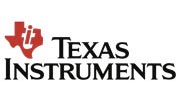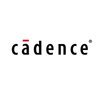


i
KLA
Work with us
![]()
Filter interviews by
KLA Manufacturing Engineer Interview Questions and Answers
KLA Manufacturing Engineer Interview Experiences
1 interview found
I applied via Company Website and was interviewed in Aug 2023. There were 2 interview rounds.
Factors to consider to setup a tool in a semiconductor fab.
(1 Question)
- Q1. Past experiences
Top trending discussions






Interview questions from similar companies

I applied via Referral and was interviewed before Jan 2021. There were 5 interview rounds.
Interview Questionnaire
2 Questions
- Q1. Basic data structures questions from bit manipulation, trees, arrays, string
- Q2. Questions related to previous company work.
Interview Preparation Tips
I applied via LinkedIn and was interviewed in May 2022. There were 3 interview rounds.

Easy questions were there in round 10 . . . . . . .
(2 Questions)
- Q1. Easy questions. . . . . . . . .
- Q2. Everything from fundamentals.....
Interview Preparation Tips

Senior Engineer Interview Questions & Answers
Advanced Micro Devicesposted on 27 Jul 2024
(2 Questions)
- Q1. Last Project details
- Ans.
Designed and implemented a cloud-based data analytics platform for real-time monitoring of network performance.
Led a team of 5 engineers in developing the platform using AWS services such as EC2, S3, and Lambda functions
Integrated data visualization tools like Tableau for generating reports and dashboards
Implemented machine learning algorithms for predictive analysis of network outages
Collaborated with stakeholders to ...
- Q2. SV -UVM questions

I appeared for an interview before Feb 2024.
(2 Questions)
- Q1. NX tool test given
- Q2. Technical round with interviewers

Manufacturing Engineer Interview Questions & Answers
Applied Materialsposted on 25 Nov 2024
I applied via Referral and was interviewed in Oct 2024. There were 2 interview rounds.
(2 Questions)
- Q1. Tell me about yourself
- Ans.
Experienced manufacturing engineer with a background in process improvement and project management.
Bachelor's degree in Mechanical Engineering
5+ years of experience in manufacturing industry
Proficient in CAD software and Lean Six Sigma methodologies
Led successful projects to reduce production costs and improve efficiency
- Q2. Experience in semiconductor industry
- Ans.
I have 5 years of experience in the semiconductor industry working on process optimization and equipment maintenance.
Worked on process optimization to improve yield and efficiency
Experience in equipment maintenance and troubleshooting
Familiar with cleanroom protocols and safety procedures
Collaborated with cross-functional teams to implement new technologies
Knowledge of semiconductor manufacturing standards and practice...
(2 Questions)
- Q1. Experience in troubleshooting electromechanical systems
- Ans.
I have extensive experience troubleshooting electromechanical systems in various manufacturing environments.
Identifying root causes of issues in electromechanical systems
Utilizing diagnostic tools and equipment to pinpoint problems
Developing and implementing solutions to resolve issues
Collaborating with cross-functional teams to troubleshoot complex systems
Documenting troubleshooting processes and outcomes for future r...
- Q2. Problem solving
Interview Preparation Tips

Manufacturing Engineer Interview Questions & Answers
Applied Materialsposted on 26 Dec 2021
Interview Questionnaire
5 Questions
- Q1. Poke Yoke explain.
- Ans.
Poka Yoke is a technique used in manufacturing to prevent errors or mistakes from occurring.
Poka Yoke is a Japanese term that translates to 'mistake-proofing' or 'error-proofing'.
It involves designing processes or systems in a way that makes it impossible or difficult for errors to occur.
Poka Yoke techniques can include using sensors, guides, or visual cues to prevent or detect errors.
Examples of Poka Yoke include usin...
- Q2. GD&T Explain Briefly.
- Ans.
GD&T stands for Geometric Dimensioning and Tolerancing. It is a system used to define and communicate engineering tolerances.
GD&T is a symbolic language used to specify the dimensions, form, orientation, and location of features on a part.
It ensures that parts are manufactured within acceptable limits and that they fit and function properly.
GD&T uses symbols, such as concentricity, perpendicularity, and position, to co...
- Q3. Explain 5S and Lean Manufacturing
- Ans.
5S is a methodology for organizing and maintaining a clean, efficient, and safe work environment. Lean Manufacturing is a systematic approach to eliminating waste and improving efficiency.
5S focuses on five principles: Sort, Set in Order, Shine, Standardize, and Sustain.
Sort involves removing unnecessary items from the workplace.
Set in Order involves organizing and arranging necessary items in a logical and efficient m...
- Q4. What is RPN? How its calculated.
- Ans.
RPN stands for Risk Priority Number. It is a numerical value used in risk assessment to prioritize potential failures.
RPN is calculated by multiplying three factors: Severity, Occurrence, and Detection.
Severity represents the potential impact of a failure on the system or process.
Occurrence represents the likelihood of the failure occurring.
Detection represents the ability to detect the failure before it causes harm.
Th...
- Q5. Other Mechanical Basics .
Interview Preparation Tips
Skills evaluated in this interview

Manufacturing Engineer Interview Questions & Answers
Applied Materialsposted on 27 Feb 2023
I applied via Campus Placement and was interviewed in Aug 2022. There were 3 interview rounds.

It was purely technical based test. Basic mechanical engineering questions were aksed
(2 Questions)
- Q1. What is Bill of Materials ?
- Ans.
Bill of Materials is a comprehensive list of raw materials, components, and assemblies required to manufacture a product.
It includes information about the quantity, part number, and description of each item.
It helps in planning and managing the production process.
It is used in inventory management and cost estimation.
Example: A bill of materials for a bicycle would include the frame, wheels, pedals, brakes, etc.
Example...
- Q2. How can we judge your management skills ?
- Ans.
My management skills can be judged through my ability to effectively lead teams, achieve project goals, and implement process improvements.
Demonstrated success in leading cross-functional teams to meet production targets
Implemented lean manufacturing principles resulting in cost savings and increased efficiency
Received positive feedback from team members on my communication and problem-solving skills
Successfully manage...
Interview Preparation Tips

I applied via Approached by Company and was interviewed in Mar 2024. There was 1 interview round.
Leetcode questions followed by technical subjects
Interview Preparation Tips

I applied via Naukri.com and was interviewed in May 2021. There were 3 interview rounds.
Interview Questionnaire
1 Question
- Q1. Embedded software and hardware
Interview Preparation Tips
KLA Interview FAQs
Tell us how to improve this page.
KLA Interviews By Designations
- KLA Applications Engineer Interview Questions
- KLA Software Engineer Intern Interview Questions
- KLA Associate Technical Leader Interview Questions
- KLA Software Developer Interview Questions
- KLA Senior Software Engineer Interview Questions
- KLA Product Application Engineer Interview Questions
- KLA Software Quality Engineer Interview Questions
- KLA Analyst Interview Questions
- Show more
Interview Questions for Popular Designations
- Senior Engineer Interview Questions
- Quality Engineer Interview Questions
- Production Engineer Interview Questions
- Project Engineer Interview Questions
- Junior Engineer Interview Questions
- Mechanical Engineer Interview Questions
- Maintenance Engineer Interview Questions
- Assistant Engineer Interview Questions
- Show more
Overall Interview Experience Rating
based on 1 interview experience
Difficulty level
Duration
Interview Questions from Similar Companies
|
Associate Technical Leader
65
salaries
| ₹25 L/yr - ₹45 L/yr |
|
Software Engineer
55
salaries
| ₹10 L/yr - ₹30 L/yr |
|
Technical Lead
36
salaries
| ₹18.8 L/yr - ₹50 L/yr |
|
Associate Software Engineer
21
salaries
| ₹16.3 L/yr - ₹33.7 L/yr |
|
Software Engineer2
16
salaries
| ₹20.4 L/yr - ₹29 L/yr |

Qualcomm

Intel

Molex

TDK India Private Limited
- Home >
- Interviews >
- KLA Interview Questions









